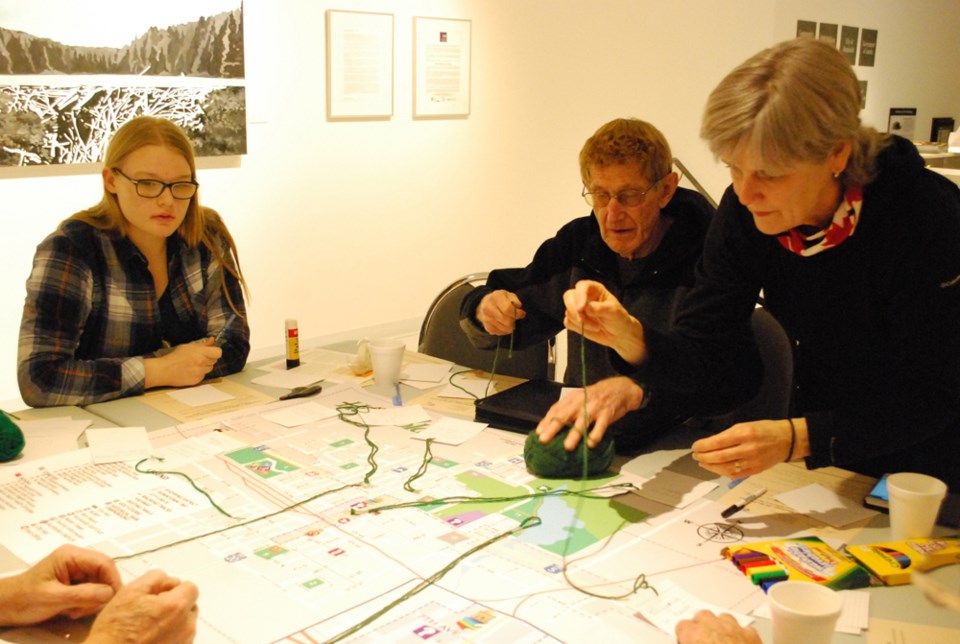Any historical building is important but it is the stories about it that give the building meaning.
Members of the community joined Kristin Catherwood with Heritage Saskatchewan to map these stories at the People, Places and Traditions Workshop on Jan. 25 at the Humboldt Gallery.
Catherwood returned to Humboldt for the first time since her workshop on intangible history at the Humboldt and District Gallery on Sept. 14, 2016 to discuss the intangible history that surrounds Humboldt.
Participants were given a map of Humboldt and mapped out traditions they remember, where groups of people lived, and different places that have had an impact on Humboldt’s history that may not be there anymore.
“The outcome of all of this is going to be a whole bunch of local data concerning heritage that community members have brainstormed.”
This is a new workshop through Heritage Saskatchewan so Humboldt was the guinea pig, says Catherwood.
Examining our place in this way brings to light why the places and people are important to not only the communities but individuals, as well.
“I think you get this richer tapestry of this area,” says Catherwood.
Some people may not see the importance of that, she says, but the stories of their place has still shaped them in some way.
“In that way it is important because it gives us insight and understanding into ourselves and into different groups in communities.”
The historical division between some groups is quite evident in Saskatchewan’s history and they are often based on cultural backgrounds.
This continues to this day in some communities, especially with new groups joining the cultural mosaic but this is one way to start bridging those gaps, says Catherwood, “first by recognizing that (the gaps) exist and secondly, trying to understand why they exist.”
Going from there, groups may realize that these fundamental differences should not divide us and they actually have a lot more in common than they thought.
Humboldt and District Museum and Gallery Director, Jennifer Fitzpatrick, says they are going to take this information into account as they redesign the Museum to include stories from residents old and new.
“Many of the exhibits were designed in the 1980s and it is our responsibility to ensure that the exhibits are refreshed and relevant to Humboldt of today.”
With now over 20,000 artifacts in the Humboldt and District Museum collection, Fitzpatrick says they want to re-evaluate the public’s access to the collection.
“There are several community stories that have been researched over the past years that we feel should be presented to the community within the exhibits.”
The redesign is going to take place over a five year span and Fitzpatrick says they want to ensure the community is involved so that the museum can reflect stories that are relevant to the community.
“We are asking the community to identify stories and traditions that should be reflected in the museums programs, and ultimately in the museum re-design.”




